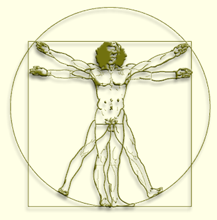
 Somatic Psychology, sometimes called Body Psychology, with origins in clinical psychology and Freud and Jung. It addresses body and the mind holistically with emphasis on the reciprocal relationships of the body and mind. The word somatic comes from the ancient Greek somat (body). Somatic psychology has developed over the last seventy-five years. It is based in psychological, neurological, developmental, medical, social and cultural science. It is recognized that broader concepts of body/somatic/ psychotherapy, like ‘energy’ in the body, can be extended towards the ‘energy’ concepts of Eastern medicines and philosophies (Yoga, Acupuncture, etc.) and have connections with other ‘body therapies’ (like Massage, Alexander Technique, Feldenkrais, Reiki, etc.), Somatic Psychology is developing into its own branch of psychology. Body Psychotherapy is very useful in the treatment of trauma, grief, and chronic pain.
Somatic Psychology, sometimes called Body Psychology, with origins in clinical psychology and Freud and Jung. It addresses body and the mind holistically with emphasis on the reciprocal relationships of the body and mind. The word somatic comes from the ancient Greek somat (body). Somatic psychology has developed over the last seventy-five years. It is based in psychological, neurological, developmental, medical, social and cultural science. It is recognized that broader concepts of body/somatic/ psychotherapy, like ‘energy’ in the body, can be extended towards the ‘energy’ concepts of Eastern medicines and philosophies (Yoga, Acupuncture, etc.) and have connections with other ‘body therapies’ (like Massage, Alexander Technique, Feldenkrais, Reiki, etc.), Somatic Psychology is developing into its own branch of psychology. Body Psychotherapy is very useful in the treatment of trauma, grief, and chronic pain.
“Focusing” is a therapeutic concept developed by Eugene Gendlin, who did research at the University of Chicago into psychotherapy and counseling for fifteen years. He was examining what makes psychotherapy successful or unsuccessful and determined that it is not the therapist’s technique that determines the success of psychotherapy, but something the client does during therapy sessions. Gendlin found that successful clients intuitively focused on a very subtle and vague internal bodily awareness, which he termed a “felt sense.” This is what we call Focusing.
Genlin theorized that much of what a person truly knows has never been consciously thought and verbalized. “Felt sense” is the name Gendlin gave to the unclear preverbal sense of ‘something’, as that something is experienced in the body. It is not the same as an emotion. This bodily felt ‘something’ may be of a situation, or of something that is ‘coming’ like an idea or the line of a poem. It is unclear and vague and is always more than any one expression from it. The focusing process makes a felt sense more tangible and easier to work with.
Focusers turn their attention to this not-yet articulated knowing of themselves in the belief that it facilitates new words, insights, and supports action steps into changing one’s life. Gendlin, and others, devised teaching steps for the process he had observed, he listed six steps in his book entitled Focusing. Focusing is practiced worldwide, by individuals and professionals alike. The Focusing-oriented psychotherapist, among other things, attributes central importance to the client’s capacity to be aware of his/her “felt sense,” and the meaning behind the words or images s/he chooses to represent the felt sense. Additionally, the therapist pays attention to his/her own felt sense as a source of information and insight during the therapy process.
Gail-Elaine Tinker, M.S. integrates conventional ‘talk therapy’ techniques with ‘body psychology’ techniques to help her clients become more aware of their relationships with the signals and wisdom their bodies endow. Understanding of one’s own breathing, “knots in pit of stomach,” headaches, perspiration, insomnia, muscle tightness or twitching, etc is empowerment to one’s psychological processes. Sometimes, Gail-Elaine utilizes her Reiki training, with Focusing, to teach further body relaxation and facilitate the client’s ability to integrate relaxation into their wellness.
